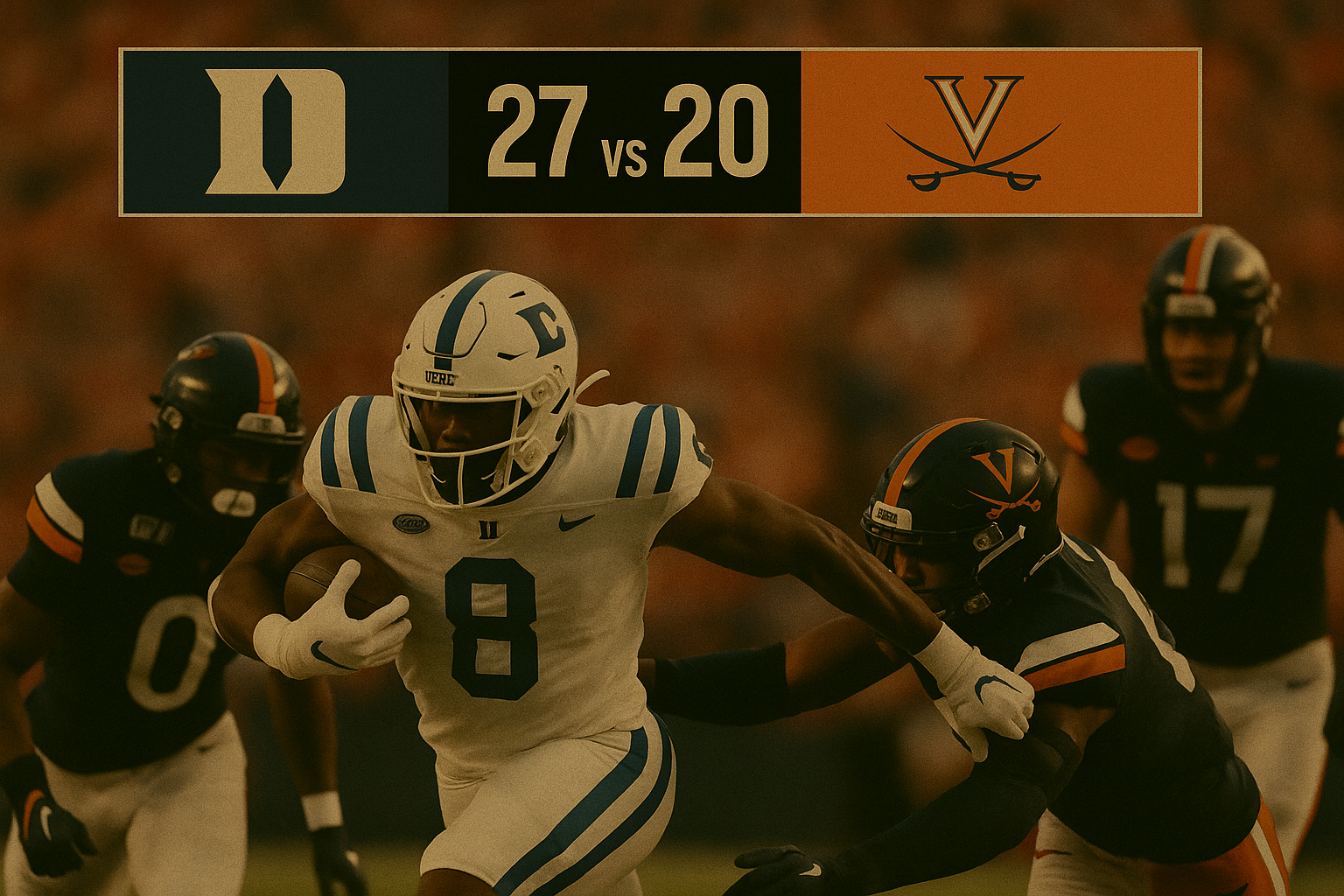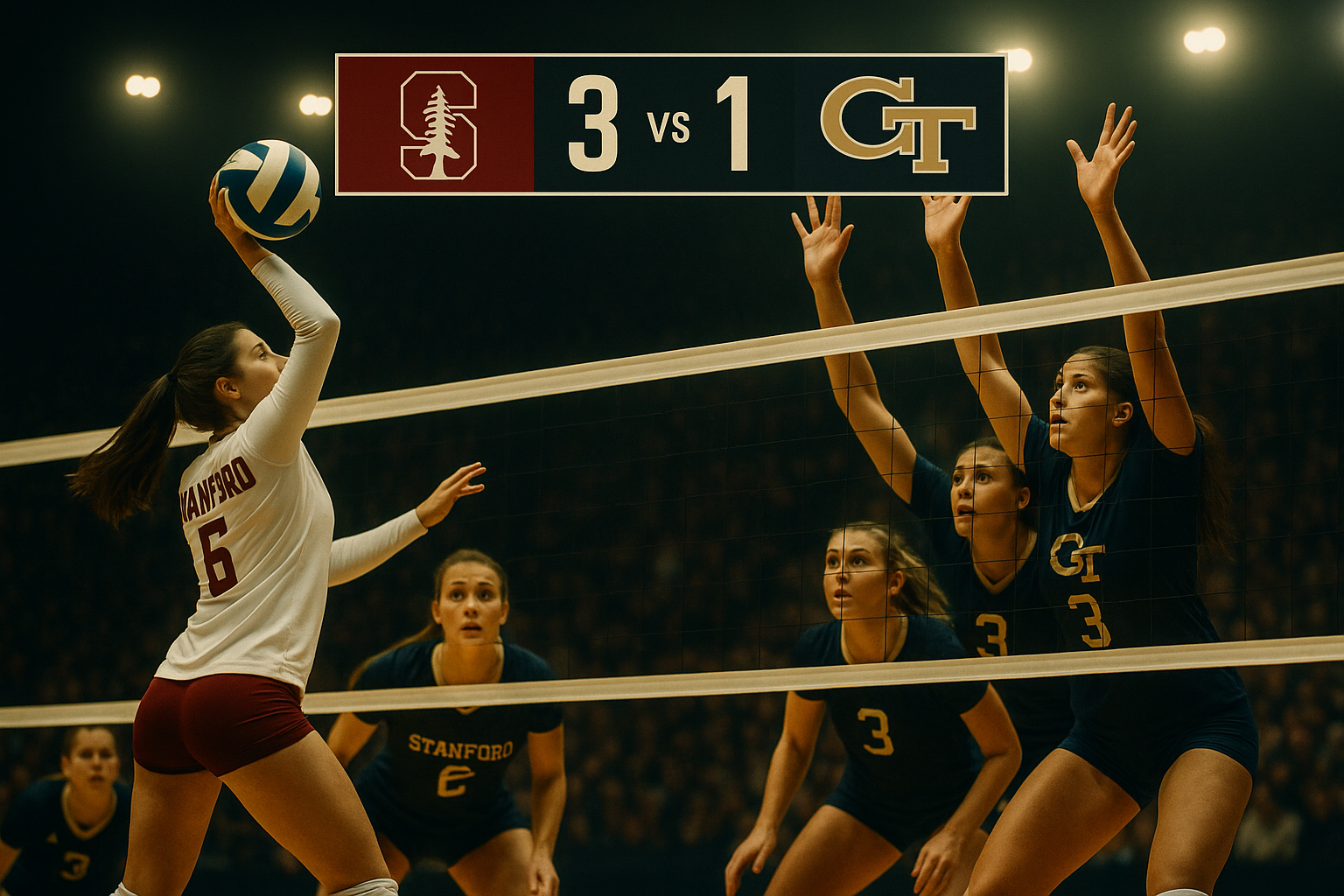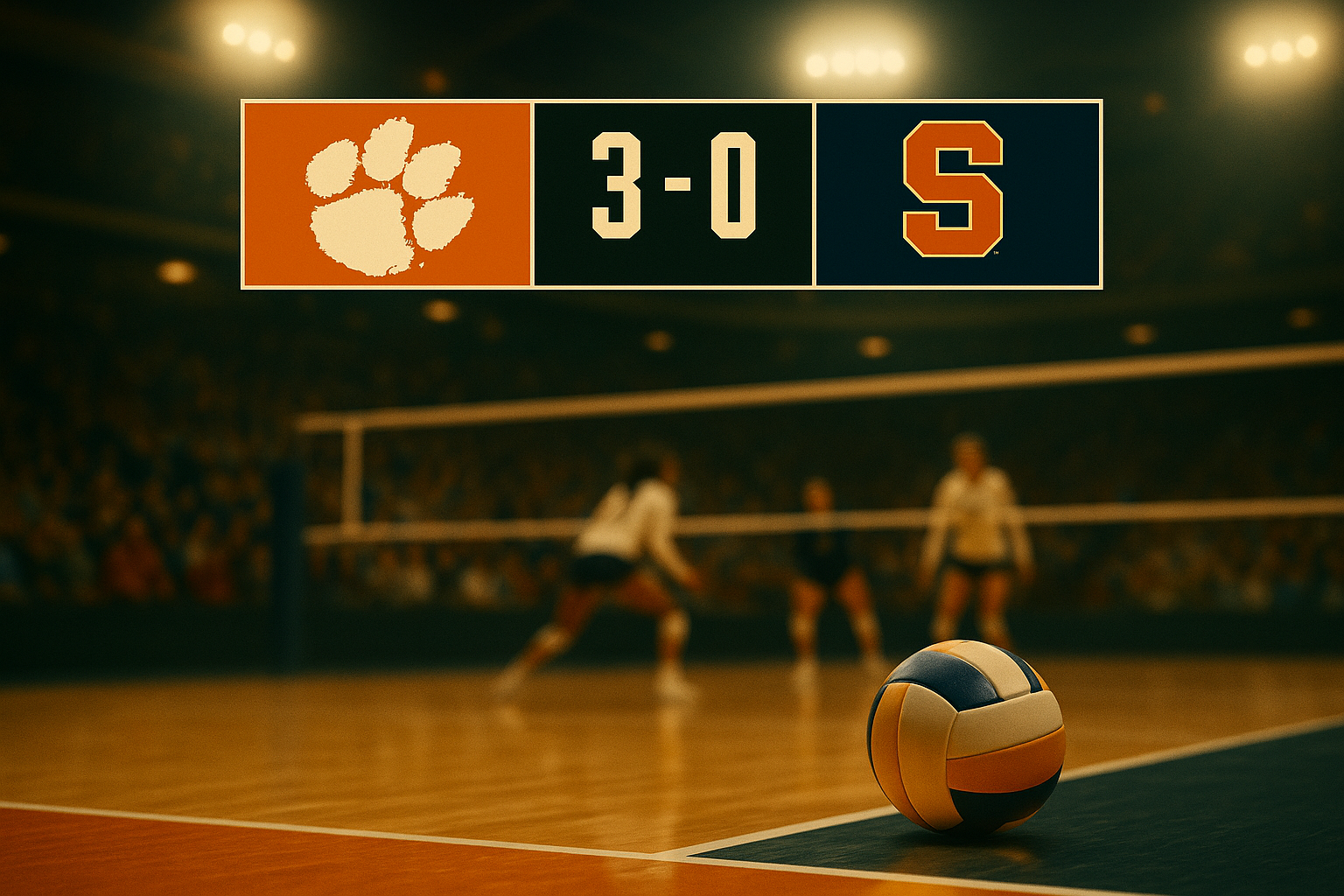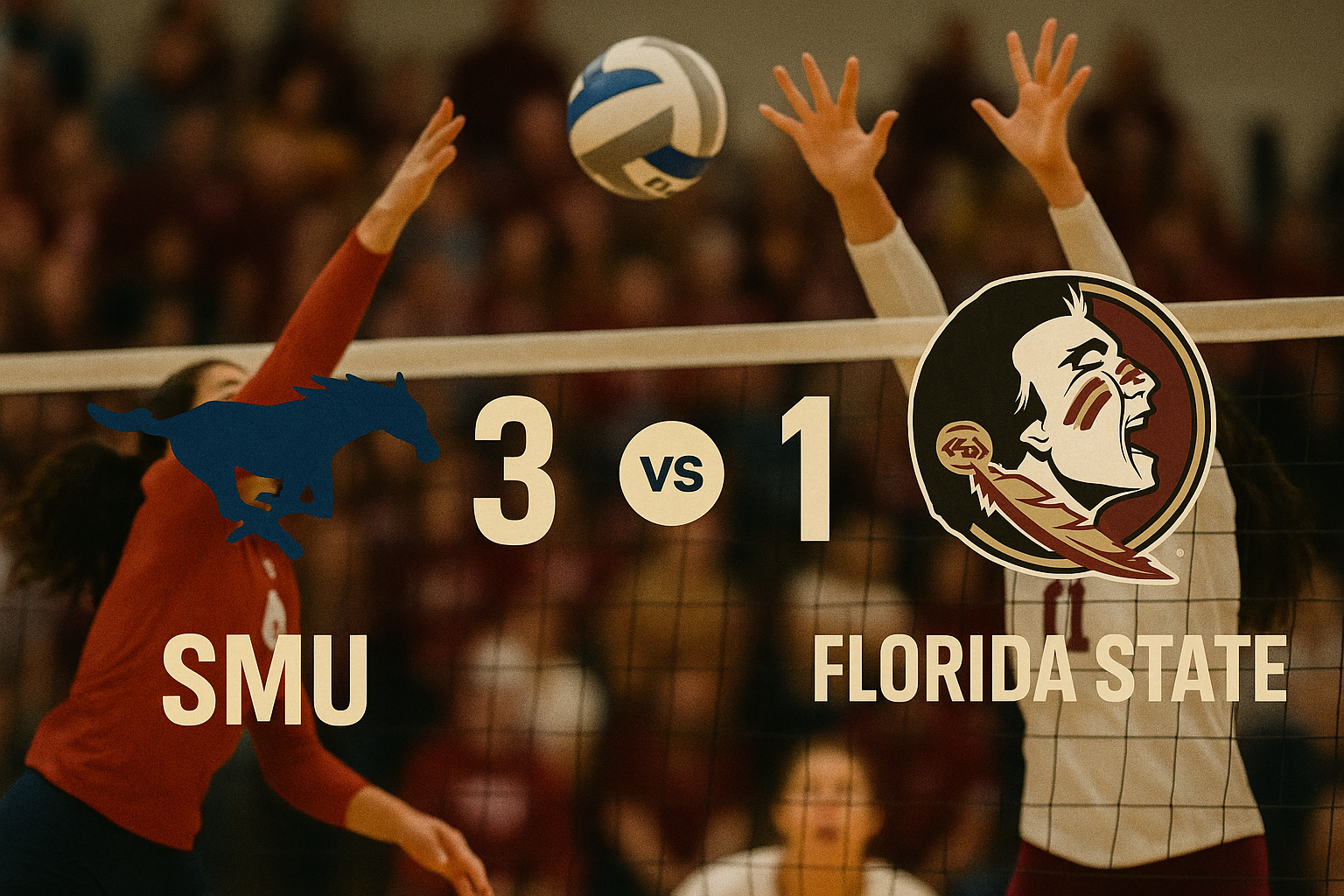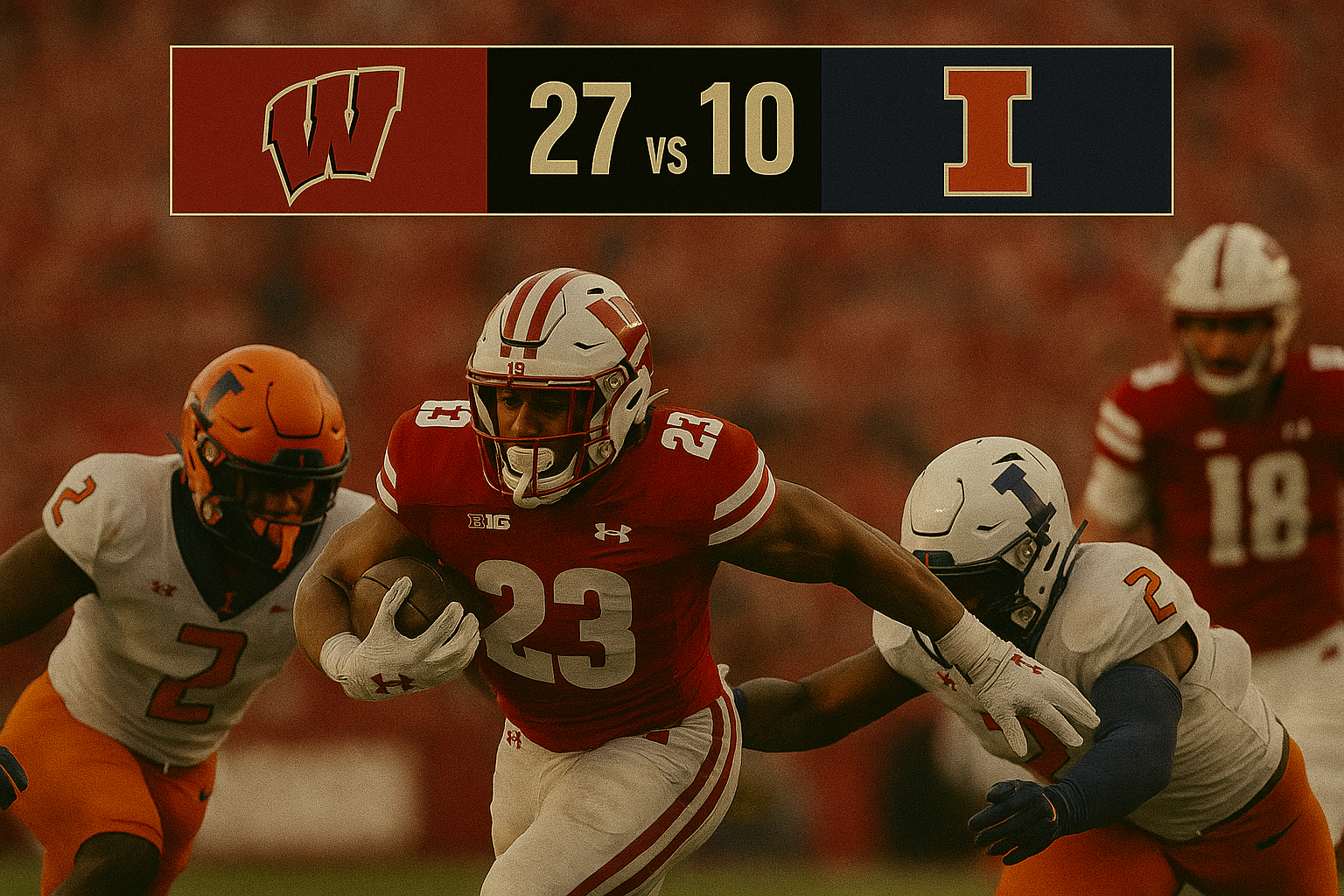No. 19 Alabama Overpowers Wisconsin 38–14 in Tuscaloosa
Crimson Tide Roll at Home
The atmosphere inside Bryant–Denny Stadium was electric as No. 19 Alabama hosted Wisconsin for the Badgers’ first-ever trip to Tuscaloosa. What started with some promise for the visitors quickly turned into a showcase of Alabama’s offensive firepower. Behind quarterback Ty Simpson’s career-best outing, the Crimson Tide pulled away for a 38–14 victory, improving to 2–1 on the season and handing Wisconsin its first loss.
Simpson Leads the Tide
Ty Simpson turned in the finest performance of his young career, completing 24 of 29 passes for 382 yards and four touchdowns. He added 25 rushing yards, making him responsible for 407 of Alabama’s 454 total yards of offense. His accuracy and command of the game allowed Alabama to stay efficient throughout, at one point stringing together 13 consecutive completions.
Simpson’s favorite target was freshman sensation Ryan Williams, who turned five receptions into 165 yards and two touchdowns, including scoring plays of 75 and 41 yards. Germie Bernard contributed both as a runner and receiver, adding a two-yard rushing touchdown and a 43-yard scoring catch. Isaiah Horton chipped in with a 13-yard touchdown reception, while the offensive line held firm to give Simpson ample time to distribute the ball.
The Crimson Tide offense demonstrated explosiveness, with a mix of quick strikes and sustained drives. A highlight came late in the second quarter when Simpson engineered an eight-play, 98-yard march capped by Horton’s touchdown grab.
Defense Clamps Down
On the other side of the ball, Alabama’s defense held Wisconsin to just 209 total yards, limiting the Badgers to 92 on the ground. The unit tallied four sacks and forced two turnovers, both coming on interceptions by defensive back Bray Hubbard. Linebacker Deontae Lawson led the way with nine tackles, while LT Overton, Yhonzae Pierre, Qua Russaw, and London Simmons each recorded a sack.
Hubbard’s pair of interceptions proved pivotal, setting up Alabama scores and ending Wisconsin’s momentum before it could build. The Tide defense suffocated the Badgers’ running game, forcing backup quarterback Danny O’Neil into long-yardage situations where mistakes mounted.
Wisconsin’s Uphill Battle
Wisconsin entered Tuscaloosa with sophomore Danny O’Neil starting in place of the injured Billy Edwards Jr. After an impressive debut against Middle Tennessee, O’Neil struggled against Alabama’s speed and pressure. He threw for just 117 yards on 12 completions with two costly interceptions that stalled promising drives.
The Badgers’ lone highlights came in special teams and a late offensive spark. Early in the third quarter, Trech Kekahuna returned a kickoff 95 yards for a touchdown, putting Wisconsin on the board after falling behind 28–0. Later, O’Neil connected with Jayden Ballard for a 41-yard touchdown pass to trim the deficit in the fourth quarter. Beyond those moments, however, the Badgers’ offense sputtered, averaging just 2.7 yards per carry and surrendering four sacks.
Wisconsin’s defense initially held strong against Alabama’s ground game, limiting the Tide to just 72 rushing yards. But repeated breakdowns in the secondary allowed Simpson and Williams to connect for explosive plays that broke the game open.
Turning Points
Alabama took control midway through the first half. After building a 14–0 lead, the Tide struck just before halftime with Horton’s touchdown catch to make it 21–0. On the first play of the third quarter, Simpson found Williams for a 75-yard bomb, extending the lead to 28–0. Although Kekahuna’s kickoff return briefly lifted the Badgers, Alabama quickly answered with another Williams score on its next drive, effectively sealing the outcome.
What It Means
For Alabama, the win extended head coach Kalen DeBoer’s perfect start at Bryant–Denny Stadium to 9–0, the longest home-opening streak by a Crimson Tide coach since the early 20th century. More importantly, it showed that the Tide can still dominate opponents through the air even when the ground game stalls. With Simpson building confidence and Williams emerging as a star, Alabama looks poised to contend in the SEC.
For Wisconsin, the defeat was a reminder of the gulf between building programs and established powers. The Badgers’ offensive line struggled with consistency, their young quarterback looked unsettled against elite competition, and their defense was unable to keep pace with Alabama’s speed. Head coach Luke Fickell will need to regroup quickly, with Maryland looming in Big Ten play.
Final Takeaway
Alabama’s 38–14 victory over Wisconsin was decisive in every phase. Ty Simpson’s career day, Ryan Williams’ explosiveness, and a disciplined defensive effort left no doubt about the Tide’s quality. Wisconsin showed flashes, including a kickoff return touchdown, but turnovers, sacks, and penalties ensured they never truly threatened.
The result reinforced Alabama’s ability to adapt under new leadership while highlighting Wisconsin’s need for growth before it can compete with the nation’s elite.
